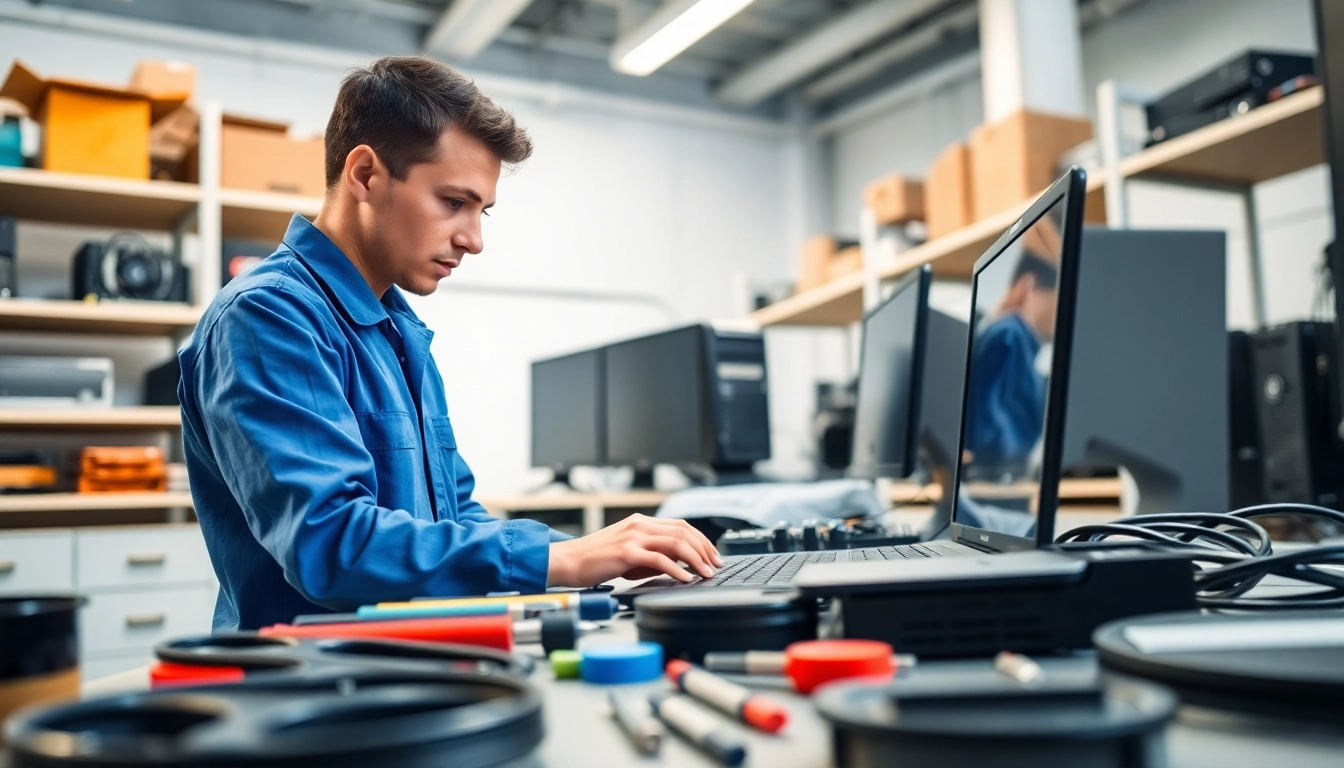Understanding Computer Repair Basics
In today’s digital age, our reliance on computers for both personal and professional tasks is greater than ever. However, just like any other technology, computers are prone to issues that can disrupt our day-to-day activities. This comprehensive guide delves into the essentials of computer repair, helping you understand what it entails, the common issues you may encounter, and when to seek professional help.
What is Computer Repair?
Computer repair is the process of diagnosing, troubleshooting, and resolving issues that affect the functionality of personal computers, laptops, and tablets. This can encompass a wide range of tasks, from fixing hardware components like screens, keyboards, and motherboards to addressing software bugs or performance issues. With technology rapidly evolving, computer repair services are adapting to offer solutions for both traditional and advanced computing devices.
Common Issues Requiring Repair
Being familiar with the typical problems can aid in timely intervention. Below are some of the most common issues that generally call for repair services:
- Virus and Malware Infections: Malicious software can severely impact your computer’s performance and security.
- Hardware Failures: Components like hard drives, RAM, or graphics cards can fail, leading to data loss and operational challenges.
- Software Issues: Problems with operating system updates or corrupt applications can hinder usability.
- Overheating: Failure to manage internal temperatures can lead to hardware damage.
- Slow Performance: Piling up software, junk files, or insufficient resources can degrade speed.
When to Seek Professional Help
Determining when to call in the experts can save you time, money, and frustration. Here are some indicators:
- Persistent issues that don’t resolve with basic troubleshooting.
- Significant hardware replacements, like a new motherboard or power supply.
- Data recovery needs after a critical hardware failure.
- Complex software problems that require in-depth knowledge.
The Importance of Regular Maintenance
One of the most effective ways to avoid extensive computer repairs is through regular maintenance. Just as a car requires regular checks, so too does your computer.
Preventative Measures to Avoid Repairs
Implementing preventative measures can extend the lifespan of your computer and minimize the need for repairs. Here are some actionable steps:
- Conduct regular hardware inspections to check for dust and debris.
- Utilize surge protectors to prevent electrical damage.
- Establish routine system updates for both software and operating systems.
- Schedule regular backups to external drives or cloud services.
Software Maintenance and Updates
Keeping software up-to-date is crucial for both security and performance. Regular updates can protect your system from vulnerabilities, while optimizing its overall effectiveness.
- Enable automatic updates for your operating system.
- Regularly update your antivirus software to fend off newly discovered threats.
- Uninstall unused applications that consume resources and can lead to slowdowns.
Hardware Care Tips
Physical care of your computer’s hardware is just as important. Here are some helpful tips:
- Clean your computer regularly to prevent dust accumulation.
- Avoid placing your laptop on soft surfaces that might block ventilation.
- Utilize cooling pads for laptops to manage overheating.
Choosing the Right Computer Repair Service
Selecting a competent repair service is crucial to ensure effective solutions. Here are some tips for finding the right provider.
Evaluating Competence and Experience
When assessing computer repair services, consider their track record and certifications. A reputable service provider will often have technicians certified in various hardware and software specializations.
Comparing Service Warranties
Good repair shops will offer warranties on their services and parts. Understanding the warranty terms can provide peace of mind and protect your investment. Look for a service that offers at least a 30-day warranty on repairs.
Understanding Pricing Structures
Pricing can vary widely among computer repair services. It’s essential to receive a detailed estimate before proceeding with repairs, which should outline labor costs and parts needed. Avoid shops that prefer to charge by the hour without a transparent breakdown.
DIY vs. Professional Computer Repair
Deciding between attempting a DIY repair and hiring a professional can be challenging. It’s essential to weigh the pros and cons of each approach individually.
When to Repair It Yourself
If you’re tech-savvy or simply enjoy challenges, there are instances when DIY repairs can be effective, such as:
- Reinstalling software or conducting updates.
- Replacing easily accessible components like RAM or hard drives.
- Performing virus scans and system cleanups.
Popular DIY Repair Techniques
There are numerous resources online to assist you with DIY repairs. Communities like iFixit provide detailed instructions on common fixes. Common DIY repair techniques include:
- Replacing a hard drive with step-by-step guides.
- Updating or reinstalling operating systems.
- Using troubleshooting software to identify issues.
Risks of DIY Repairs
While DIY efforts can be successful, there are risks involved, such as:
- Voiding warranties by opening a device.
- Risk of further damaging components.
- Lack of professional assessment can lead to ignoring underlying issues.
Future Trends in Computer Repair
As technology evolves, so will computer repair services. Staying informed about emerging trends can provide insights into what to expect in the future.
The Impact of Technology on Repair Services
The integration of advanced diagnostic tools—such as AI and machine learning—will streamline repair processes, allowing technicians to identify issues more effectively and expedite resolutions.
Emerging Tools and Techniques
Innovations such as remote diagnostics and cloud-based management solutions are making it easier to perform maintenance and repairs swiftly. These tools allow technicians to address issues without requiring physical access to devices.
Preparing for the Future of Computer Maintenance
Future-proofing your computer requires an understanding of the trends in technology. Emphasizing the importance of updates, backups, and protective measures will ensure that your hardware and software remain efficient and secure.
In conclusion, whether you opt for DIY repairs or professional assistance, understanding the basics of computer repair will empower you to make informed decisions that enhance your computing experience. Regular maintenance, being aware of common issues, and selecting the right service can dramatically increase the lifespan and performance of your devices.
